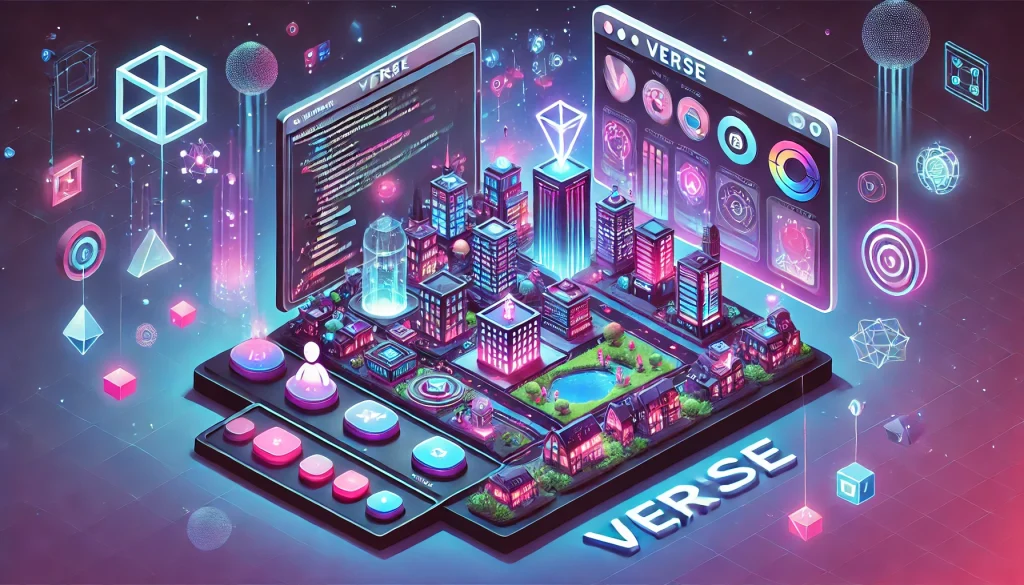Technology never stands still. Each year, new programming languages, frameworks, and tools emerge, aiming to solve modern problems more efficiently or elegantly than their predecessors. In 2025, we’re seeing some notable contenders—Mojo, Rust, and Verse—taking on challenges in AI, systems programming, and metaverse development. Let’s explore why these languages are on the rise and how they can impact your future projects.
1. Mojo: AI/ML with Python’s Ease and C++ Speed
1.1 What Is Mojo?
Mojo is a new language designed for artificial intelligence and machine learning applications. Its creators tout it as blending Python-like simplicity (scripting-friendly syntax, dynamic typing features) with C++-level performance under the hood. This unique mix aims to let developers write high-level, readable code without sacrificing low-level efficiency.

1.2 Why It Matters
- Performance-Critical AI: ML workloads, especially deep learning, can be computationally intense. Mojo’s design helps reduce the overhead that pure Python often incurs.
- Seamless Transition: Python devs can quickly grasp Mojo’s syntax, speeding adoption in AI teams.
- Ecosystem Synergy: Mojo aims to work well with existing AI libraries, bridging typical Python workflows (e.g., NumPy, PyTorch) while providing lower-level memory and threading control.
1.3 Potential Use Cases
- Research Labs developing custom ML kernels, needing dynamic prototypes that also scale efficiently.
- Production Inference on constrained hardware or large-scale clusters, cutting down overhead vs. standard Python solutions.
- Hybrid Teams where data scientists are Python-savvy but production engineers demand more performance.
2. Rust: Memory Safety & Systems Programming on the Rise
2.1 Rust’s Growing Popularity
Rust, originally developed by Mozilla, continues to gain momentum in 2025. Renowned for its memory safety guarantees—thanks to a strict borrow checker—and strong concurrency support, Rust is being adopted in operating systems, embedded devices, and even the Linux kernel for safer code.

2.2 Key Advantages
- Memory Safety without Garbage Collection: Rust eliminates common C/C++ pitfalls (like buffer overflows, null pointer dereferences) at compile time without using a runtime garbage collector.
- Performance: Rust code can match or exceed C/C++ speeds, making it suitable for systems-level or high-throughput applications.
- Ecosystem & Tooling: A robust package manager (
cargo), extensive crates (Rust libraries), and active community make it easier than ever to get started.
2.3 Where You’ll See Rust
- Drivers & Kernel Modules: The Linux kernel has welcomed Rust as an option for writing safer kernel components.
- Networking & Cloud Services: Companies like AWS are using Rust in performance-critical microservices to reduce memory bugs and downtime.
- Games & Graphics: Some game studios experiment with Rust for lower-level engine modules, seeking stable performance without typical pointer issues.
3. Verse: Epic’s Metaverse-Focused Scripting Language
3.1 An Overview of Verse
Developed by Epic Games, Verse is a newcomer targeting the metaverse and game development. It aims to unify scripting for 3D virtual worlds, user-generated content, and interactive experiences. Verse sits at the intersection of gaming, AR/VR, and large-scale multiplayer engines.

3.2 Why It’s Noteworthy
- High-Level Abstractions: Verse provides a user-friendly approach for building game logic, events, and real-time interactions.
- Integration with Unreal Engine: Tightly coupled with Epic’s popular Unreal Engine, making it a natural choice for studios building advanced experiences.
- Metaverse Ambitions: As companies chase persistent virtual worlds, a dedicated language like Verse may streamline development across user mods, live events, and interactive economies.
3.3 Possible Applications
- Open-World Multiplayer: Simplify how devs script everything from NPC interactions to dynamic weather systems.
- Creator Tools: Empower non-technical creators with a domain-specific language that’s approachable for building in-game items or storylines.
- AR/VR Experiences: Verse’s design suits real-time spatial computing and multi-user interactivity.
4. Why Emerging Languages Matter
4.1 Adapting to Evolving Domains
As AI, web3, and extended reality continue to expand, specialized languages often emerge to address domain-specific needs (speed, safety, concurrency, or easy integration). Developers and companies who track these shifts can adopt languages that provide a competitive edge.
4.2 Balancing Productivity & Reliability
Languages like Mojo, Rust, and Verse each tackle a different sweet spot:
- Mojo tries to unify Pythonic productivity with performance for machine learning.
- Rust ensures memory safety without sacrificing speed, perfect for systems-level tasks.
- Verse focuses on building robust metaverse experiences with fewer integration hurdles.
Knowing which language fits your project’s requirements (and possibly pivoting to it early) can save time, reduce bugs, and future-proof your software.
4.3 Keeping Your Skills Fresh
For developers, learning new languages can open job opportunities or spark creative solutions. Even if you don’t fully switch to Rust or Mojo, exploring them broadens your perspective on concurrency models, compiler designs, or domain-specific optimizations.
5. Getting Started
- Mojo: Check official AI/ML community channels or GitHub projects for early adopters. Try small neural net examples to see how it handles.
- Rust: Dive into the “Rust Book” (official documentation) or build a side project. Practice with concurrency and safe memory patterns.
- Verse: If you use Unreal Engine, experiment with Verse-based prototypes. Explore official Epic tutorials focusing on metaverse or advanced game scripting.
Tip: Watch for ecosystem growth—libraries, community support, and real-world success stories often define whether a new language takes off or remains niche.
Conclusion
The software development landscape in 2025 is brimming with emerging programming languages and tools that address contemporary challenges—from AI’s computational demands to the metaverse’s complex real-time interactions. Mojo offers Python’s readability with near C++ performance for machine learning, Rust secures memory safety in systems programming, and Verse streamlines game and virtual world scripting.
Key Takeaways:
- Mojo suits AI tasks needing both high-level convenience and raw performance.
- Rust remains top choice for safety-critical or high-performance contexts.
- Verse targets next-gen immersive environments, especially in the gaming/metaverse realm.
Staying aware of these languages helps you choose the right tool for evolving domains—and ensures you stay competitive and curious in a rapidly shifting tech world.












